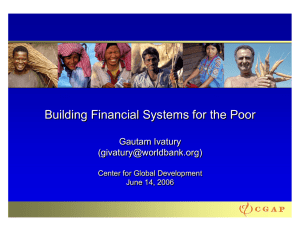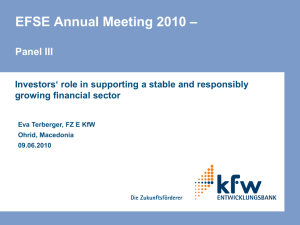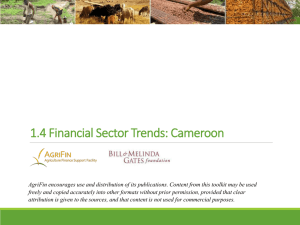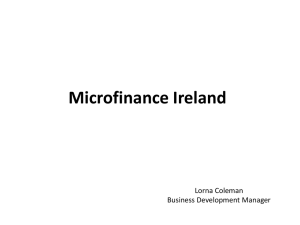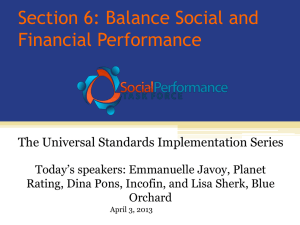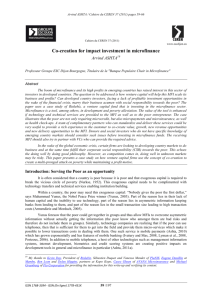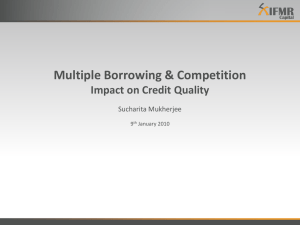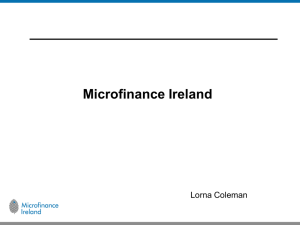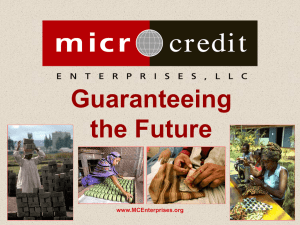Presentación de PowerPoint
advertisement
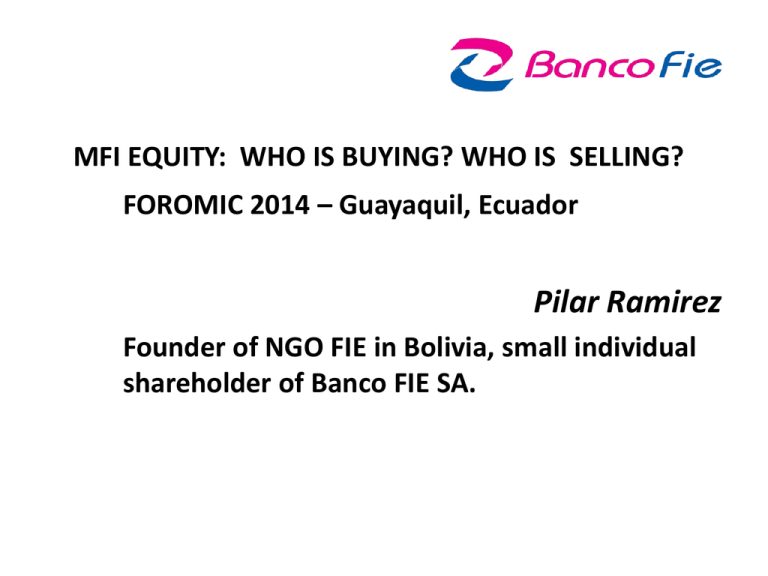
MFI EQUITY: WHO IS BUYING? WHO IS SELLING? FOROMIC 2014 – Guayaquil, Ecuador Pilar Ramirez Founder of NGO FIE in Bolivia, small individual shareholder of Banco FIE SA. INTRODUCTION 30 yrs of microfinance work in FIE in Bolivia, first as a microcredit non-profit organization, now a full commercial Bank, as well as managing the first local currency loan fund for microcredit institutions in our region, has given me the rare opportunity to witness the growth of institutions in many countries, experience a variety of credit methodologies, and live through our influence on important changes in financial regulations. This has also meant negotiating face to face with all the different types of providers of financial resources, for our activities: i.e. • very soft, long term loans (Small Loans Division at IDB), • short term soft loans, • “development aid” loans from investors requiring “put options exclusively borne by the founding NGO (CAF), to • for profit personal and institutional investors with social vocations, and • investment funds looking for high returns. Recent Trends and Its Implications High Profitability was never the guiding force behind our efforts. Access to loans and other financial services, for women and men of our continent who, because of their economic, gender and/or ethnic origin, had no access to the “formal financial institutions”, was the sole aim of the then microfinance providers. “Success” in: • growth of MFIs, • high repayment rates by loan clients, • government policies facilitating the “private, commercial sector” (vis a vis the public sector) as driving force of a country’s economic development, • encouraged important financial sector reforms towards what was then termed “mainstreaming microfinance”, or “the commercialization of microfinance”. • Where regulation allowed, in our region many former nonprofit micro-credit “programs” evolved into for-profit microfinance companies and even banks. Examples are: Banco Sol, Mi Banco, Banco ADOPEM, Bancamía, Banco D’Miro, many Edpymes in Perú becoming Financieras, Financiera El Comercio, etc. • In the case of Banco FIE, S.A. the move was one with serious concerns regarding “loss of vision and mission”, “having to up-scale into no longer low-income so-called “informal sector clients”, focusing on profitability rather than financial inclusion, the main worries among the founders of the NGO. • Despite criticisms by Professor Yunus of Grameen Bank: “making profits from the poor, is immoral”…. MFIs who performed under “capitalist tools” (many times against our original convictions) provoked a competitive environment that: Improved internal efficiency in the MFIs and lowered interest rates to clients. Forced IMFs to include new services (more clients, new services, improved distribution of costs) Gave reasonable profit levels, adequate to clients’ loan repayment capacities, Resulted in real “financial inclusion” of clients once considered “un-bankable”. Economic levels of clients improved (i.e. access to private education, better housing conditions, rising social expectations, among others). Many clients moved to “manufacturing activities” such as clothing, which is starting to replace the buying of second hand clothing from USA and Europe, “by the poor”, as well as many other cheap goods being mass produced in China and sold in our region. CURRENT CONCERNS/NEW APPROACHES • • • • • “Socially motivated” or “mission driven” investors with time-lines for exit. The pressures of “need to sell” has shifted the focus of interest of investors towards ROEs and ROAs, away from impact on MFI clients. MFI staff, busy on “day to day financial performance results”, many times tied to monthly salaries and other benefits, respond accordingly, and begin to forget original goals of economic and social inclusion. The already long-standing global financial crisis (2008 to today) influencing investors and their decisions on where to invest., is stressing the known funds making them announce the eminent need to sell their investments in MFIs. MFI investors, Board Members and Management, also pressured on results, have little time to access information and/or contact possible new “mission driven” investors. (A Timid Suggestion) Perhaps the Development Financial Institutions could access this information, and share it?) • As to the question Who is Buying/Who is Selling, my personal feeling is that now we, in the region, need to look for local investors: individuals, successful local companies, young professionals, etc. as supporters of our microfinance sector. These citizens work and produce in our countries. They have seen the growth of the MFI sector and its results. There is a new generation of entrepreneurial energy in LAC that, given the right investment vehicles, can be the future supporters of our endeavors, for the growth of our nations as a whole. Thank You!
